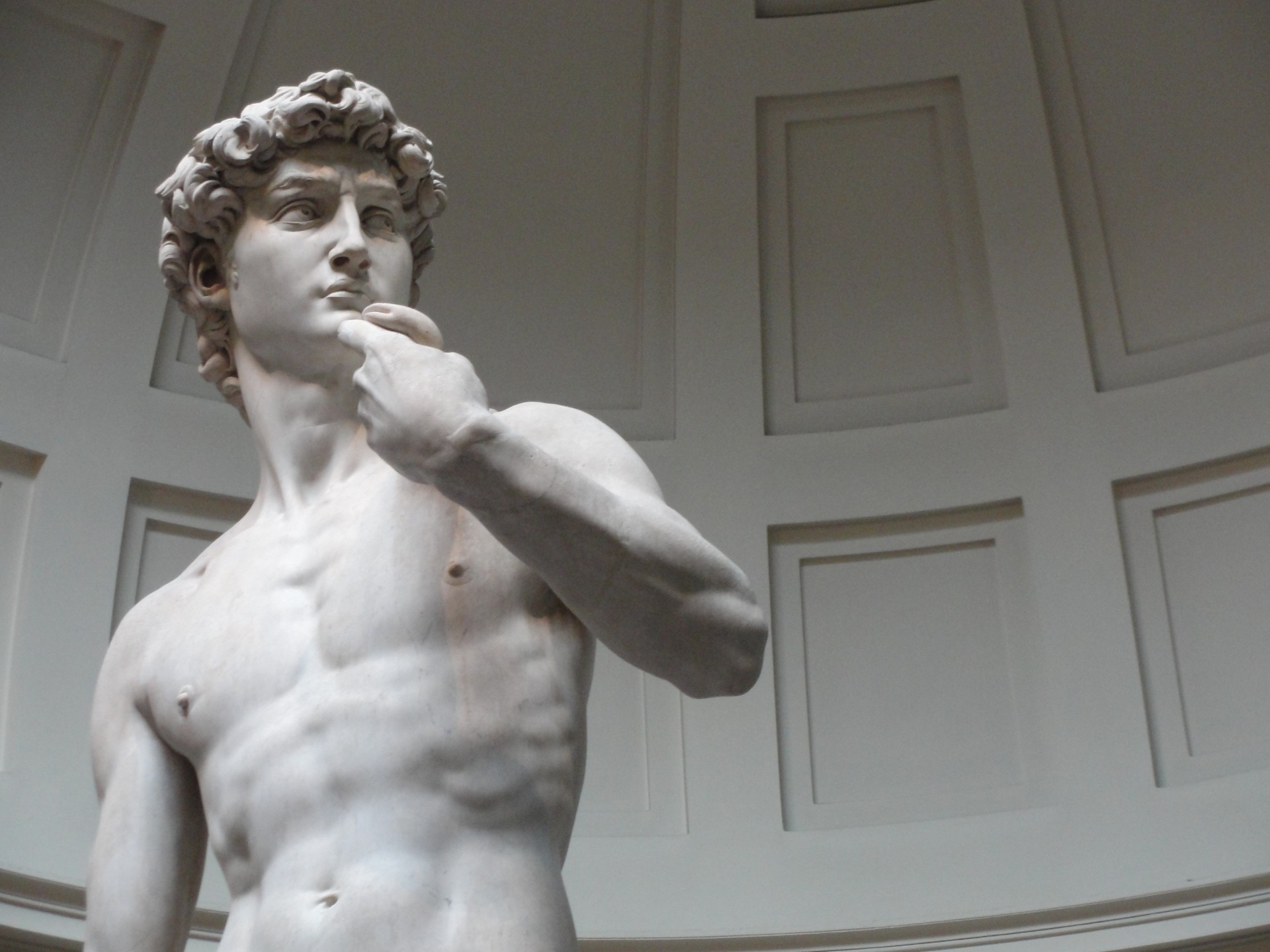
Art & Politics
Over the summer, I became more familiar with the socio-political structures that heavily influenced the work of the Italian Renaissance artists. In particular, the outsized influence of the Medici in the Republic of Florence. The Medici family came into their fortunes through banking and used those fortunes to “control” the area. Lavin (“David’s Sling and Michelangelo’s Bow”) writes that David, besides being an abstract autobiography of Michaelangelo overcoming the difficulties of working with that piece of marble, is actually a commentary on the “Medici-Goliath” (Lavin, 1990 p.140). This Goliath was a threat to the Republican nature of Florence that Michelangelo supported. With all of this political meaning overflowing from the statue, I’m not sure that most contemporary Florentines would have understood the message of David beyond the basic biblical reference.
I use the word “most” specifically. I do think that a certain class of people got the reference, I’m not sure that everyday, working class people would have seen it beyond the civic pride that Lavin discusses. The story of David was/is a crucial story in Christianity and Judaism and the movement to teach people through the art objects may have led people to take the work on its face value. Clearly, the Medici saw the meaning and used a decapitated David within Pope Leo X’s Palazzo Vecchio.*
Art and politics have been intertwined throughout the 20th and 21st centuries. So much so, it is hard to comment on it objectively without vilifying the political beliefs that you disagree with. I have found that, and there is a major bias here, that most art + politics projects appear to support progressive movements within culture. There are beautiful art murals throughout Baltimore that document both the tragic history and current struggles of the Black community within the city and nation. This work is large, public, and accessible, similar to the way Michaelangelo and Florence placed the statue David. In the same way a Florentine might see David as just a statue of the story, someone who might not get what the message behind the murals is, such as police brutality, might see an aesthetically pleasing if not “edgy” painting devoid of the context.
I tried to look up examples of conservative political art within the last 100 years. My cursory search found works that tend to be Orwellian-like propaganda posters, racist hate-speech scrawled (poorly) on walls with spray paint, or almost-juvenile attempts by artists like McNaughton who have the sophistication of tee shirts you might see for sale on a New Jersey boardwalk. Where the artists of the Renaissance could create work with multiple layers of meaning that worked against their patrons/societal leaders, conservative art doesn’t appear to be as subtle nor won’t be subtle as they are, by definition, supporting the current leadership.
* I tried and tried to find an image of this as referenced in Lavin.
Sources
https://publications.ias.edu/node/2310
This was a response to my UMD ARTH201 Class taught by Dr. Abigail Upshaw from Summer 2021.